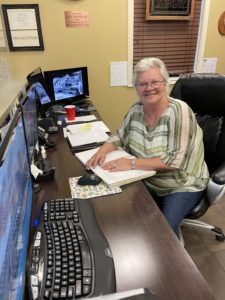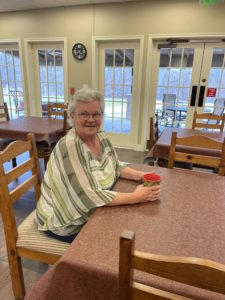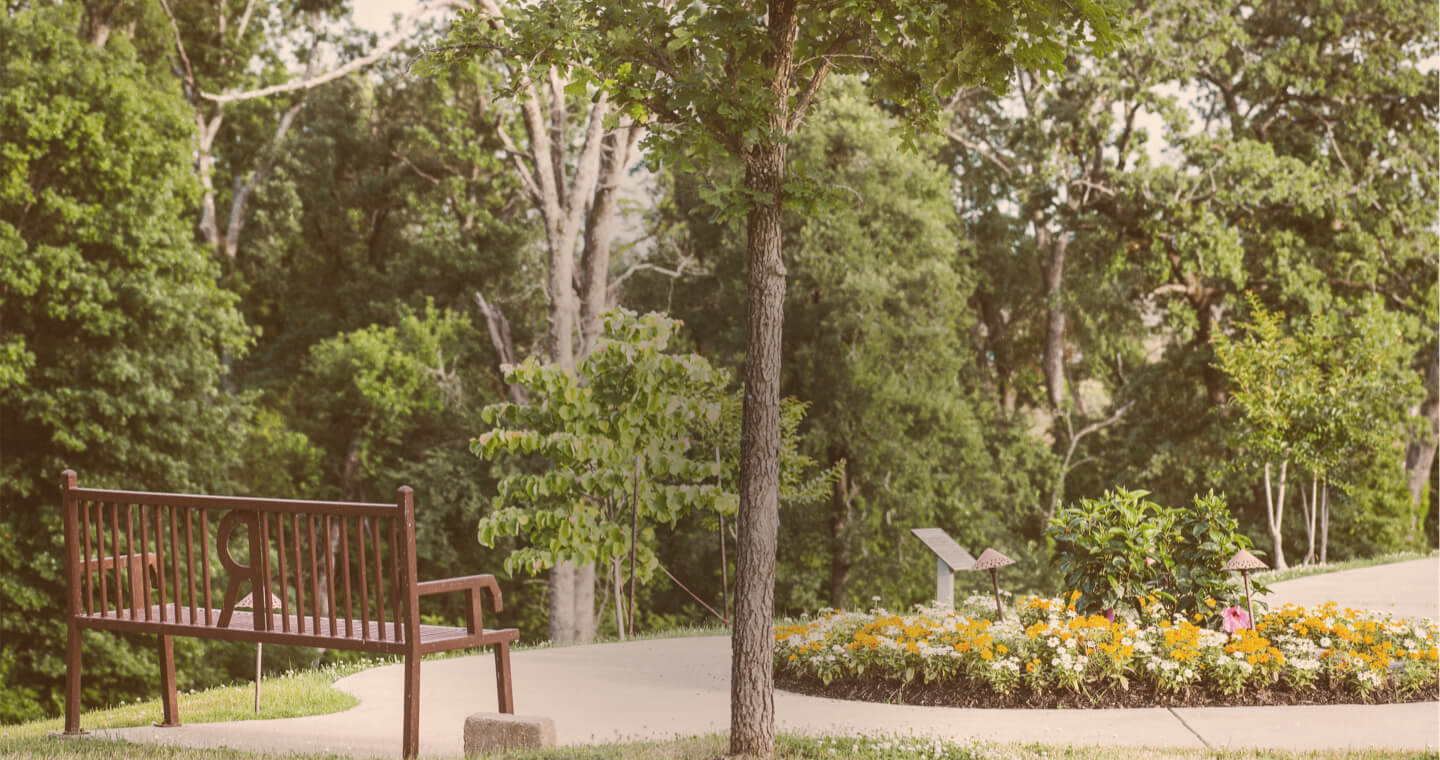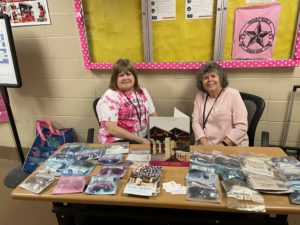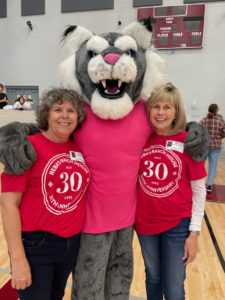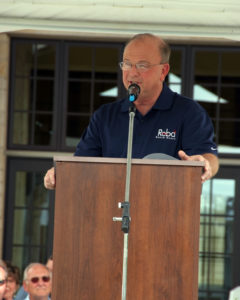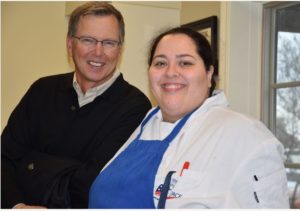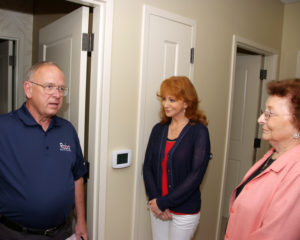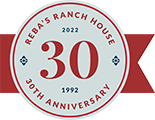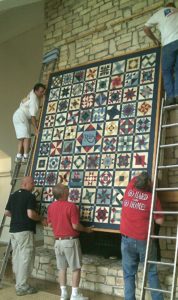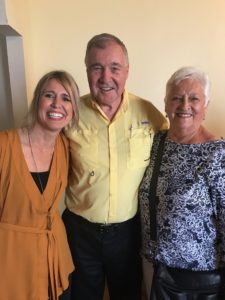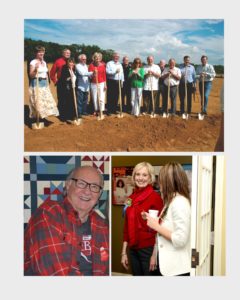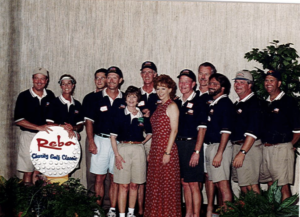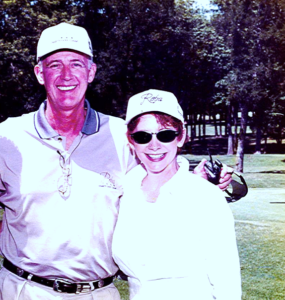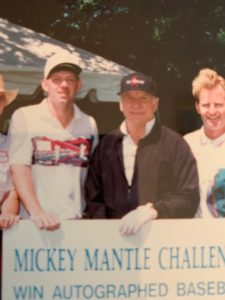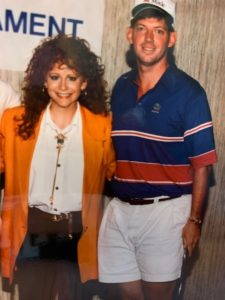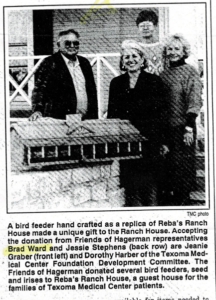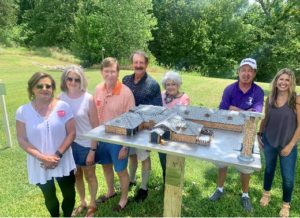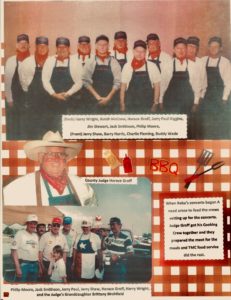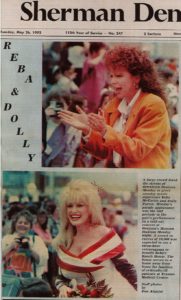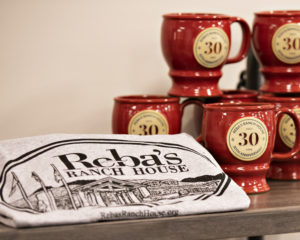
By Sarah Elisabeth Sawyer
That Christmastime-as-a-kid feeling came over Mike McKinley during the 30th anniversary reunion for the former golf tournament committee. For nearly two decades, the tournament raised funds for what became Reba’s Ranch House.
At the reunion, Mike’s friends were several years older than when they started the tournaments, but it didn’t take long for them to feel like kids at Christmas again.
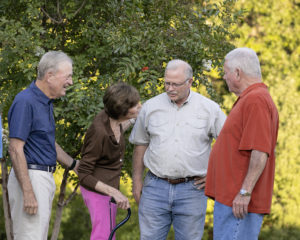
Mike (far left) with his beautiful wife speaking to Randy and Robert.
“[Those years] gave you that excitement you only get a few times in your life,” Mike said. “It was genuine.”
Thirty years after it all began, the Texoma Health Foundation (THF) and Reba’s Ranch House hosted three major reunions in September 2022 to bring together just over 100 individuals who served on the committees and the THF board of directors throughout the years. They traveled in from Virginia, Austin, San Antonio, the Dallas metroplex, and local counties to Reba’s Ranch House, and reunited after years of losing touch.
Golf Tournament Committee Reunion
An evening of food and swapping stories from the golf course brought back memories of a special time in the lives of those who took part in raising funds for the local hospital and the ranch house.
At the reunion, Mike enjoyed rare conversations with old friends, the select few who underwent those days of setting up in the wind and rain, then golfing under clear blue skies and winding down the day, exhausted.
“The reunion was very satisfying and fun, to go back and talk about stuff that you can’t talk about with just anyone,” Mike said.
Reba sent a video of love and appreciation for the former golf committee members to enjoy during their evening. It brought up memories of how Reba helped hand out trophies after the tournament. Mike recounted attending Reba’s first fundraising concert in Denison when he didn’t know much about her.
“We left that concert and I told Lynn, she’s really got a voice!” Mike recalled with a chuckle. “Little did we know we were going to get years more of her.”

Development Committee Reunion
“Absolutely magical” is how Sherry Christie described the reunion evening for the development committee that once oversaw the Memorial weekend fundraising efforts.
“My favorite moment was walking in the door and seeing the people that I hadn’t seen in so long,” Sherry said. “It brought back memories of how hard we’d laugh and how tired we’d get and how it all came together.”
A slideshow in the dining room showed off hundreds of photos, and prompting stories and laughter. Then the big surprise came for the nearly 100 in attendance.
“I turned around because I heard a voice that sounded like Reba,” Sherry said. “And there she was on a big screen! We could see ourselves on the screen, too, so it was almost like in the past. She was as excited to see us as we were to see her.”
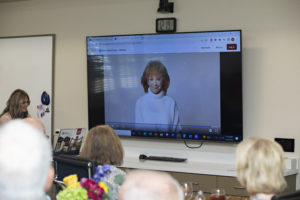
The party spilled onto the back patio under the night sky, the enthusiasm unabated. Jeanie Graber, another of the early committee members, shared her favorite part of the reunion.
“Hugging and laughing and reminiscing with all our friends,” Jeanie said. “Those human contacts, that was such fun. We were all thrilled to see each other and we were proud of the work we had accomplished.”
“If we had to do another one of those [fundraisers], I know we could get it done,” Sherry said with a laugh. “I looked around and thought, we could do it all over again. We might have to start a little earlier and work a little longer, but there was enough enthusiasm there to put together another concert.”
Before the night ended, the group gathered for a photo.
“It was nothing but big smiles,” Sherry said.
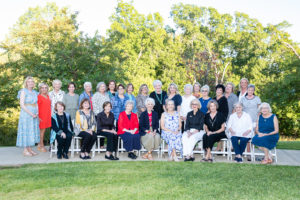
The Development Committee – Sherry, 3rd from the right, and Jeanie, 6th from the right.
THF Board Reunion
A young person couldn’t have lived in Denison during the ‘80s and ‘90s and not been part of those fundraising concerts with Reba.
“I grew up going to all the concerts,” said John Carey, a past THF board chairman. “As a young person, the concerts were awesome. You wanted to go see the show. Getting older and realizing what it was all about, makes it even more special.”
For the past and present THF board members, the luncheon reunion was combined with the regular board gathering. The event gave an opportunity for board members to recall what built the THF and Reba’s Ranch House, and recognize those who conserved and perpetuated the legacy.
“A lot of our board members didn’t know some of the past members,” Joe Fallon said. He is the current chairman of the board. “I thought it was great for them to meet and to show our appreciation, to say, ‘We have not forgotten that you guys did a lot of work and set us up for success. Job well done, and thank you.’”
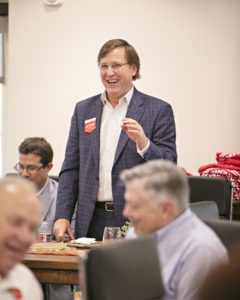
Joe Fallon
Culminating the luncheon was the announcement of a significant donation to THF.
“The day escalated,” John said. “It went from this jovial time of all of us getting together and enjoying each other’s company, to the reflection of the 30 year anniversary of the ranch house, to ‘oh, by the way, we received an extra six million dollar gift to continue our mission.’”
The gift came from philanthropist MacKenzie Scott, a contribution tied to a larger effort to identify and support organizations across the U.S. who are making a difference in health equity in vulnerable populations, including rural communities.
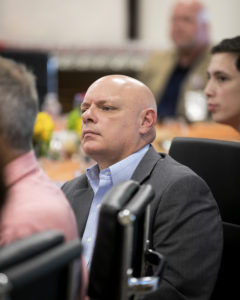
John Carey
Others Not Forgotten
A common thread through all three reunion events were quiet moments of remembering those who were missing. Many people who took part in the original effort have passed on, making the reunions all the more precious to those who could come.
“The ranch house and the foundation have been in existence long enough that we are now beginning to lose members,” John said. “[The reunion] was a reminder of everyone’s hard work and how successful the foundation has become, but I think it was there, also, to keep us connected.”
The Next 30 Years
Remembering the past paves the way to keep the ranch house and its mission at the forefront of the area communities.
“There were people over the years who were really interested in what was done, and that was brought up in the conversations,” Mike said. “I told someone, ‘Just think, a quick 30 years and we can do this reunion again.’”
He laughed, then added, “Most of us are still healthy and going strong.”
